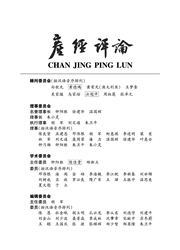

 中文摘要:
中文摘要:
绿色发展理念下,对我国区域生态效率的定量测度与评价需考虑生态效率的动态变化和对外贸易与环境规制对区域生态效率的影响.以2002-2012年中国30个省际面板数据为样本,运用BCC框架下的超效率DEA模型测度中国2002-2012年区域生态效率,并使用Malmquist指数分析中国2002-2012年生态效率的动态变化趋势,进一步以面板非线性Tobit模型对生态效率的影响因素进行实证分析.结果表明:在地理分布上,中国区域生态效率总体呈现"东高西低"的局面;在时间变化上,中国区域生态效率呈现逐渐减弱的趋势,通过Malmquist指数分解发现生态效率改善的主要原因是技术进步,而技术效率在不断减弱;对外贸易显著促进了生态效率的增长,而环境规制对中国生态效率有影响但不显著,说明环境规制不够严格使生态效率改进达到拐点.对外贸易和环境规制对各区域生态效率的影响不一致,对东部和中部区域的影响较西部区域更为显著.因此,通过强化环境规制来倒逼企业提高生产率,促进企业优胜劣汰机制形成,将有助于区域生态效率提升,推进经济绿色发展.
 英文摘要:
英文摘要:
Under the green development, it is necessary to measure and evaluate China's regional eco - efficiency. This paper uses Super - Efficiency - DEA model which goes under the structure of BCC to calculate the regional eco - efficiency in 30 provinces in China from year 2002 to 2012. By using the Malmquist Index decomposition analysis, this paper further analyzes the factors that contribute to the changes. In the end, the Panel Nonlinear Tobit model is used to empirically analysis the influence from international trade and environmental regulation to the ecological efficiency. The main conclusions are: the regional ecological efficiency in China is high in the east and low in the west, and the regional ecological efficiency is gradually weakening. The Malmquist Index decomposition analysis reveals that technological progress is the main reason that improves ecological efficiency, but technology efficiency keeps weakening. International trade significantly promotes the growth of ecological efficiency, environmental regulation has impact on the ecological efficiency, but not significantly. The impact of foreign trade and environmental regulation for each region is different, the east and the middle of China received a more significant effect than the west, so strengthening environmental regulation can improve enterprise productivity, help to premote the formation of the mechanism of survival of the fittest, thus being helpful for the improvement of the ecological efficiency.
 同期刊论文项目
同期刊论文项目
 同项目期刊论文
同项目期刊论文
 期刊信息
期刊信息
